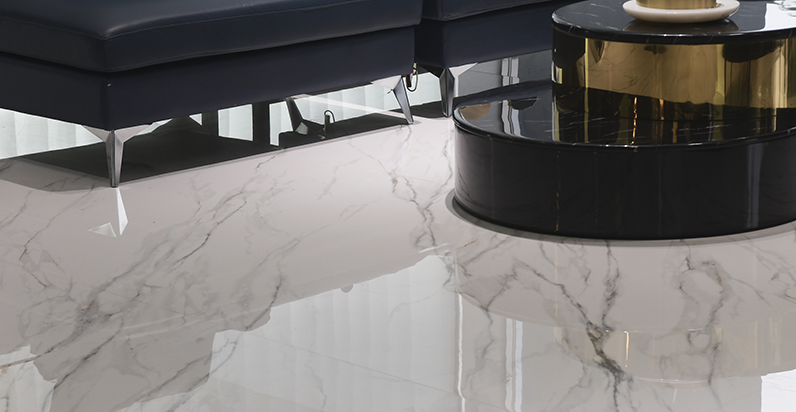Porcelain Tiles VS Ceramic VS Natural Stone

Tile has become a trendy modern flooring option adored for its versatility and polished beauty. The inundated market has a variety of tiles to pick between. Each one has its unique characteristics and price tag. Many people wonder which type to choose porcelain tiles vs ceramic vs natural stone.
Kaolin Porcelain Tiles
At Kaolin, our porcelain tiles are a classic choice. Known for their exceptional hardness, they boast a ceramic covering that is classified by Standard ISO 13006 (Bla) which means that it is a pressed material that has an absorption that is either equal to or lower than 0.5 per cent.
Porcelain tiles are obtained from raw materials and have an exceedingly high degree of purity. They undergo a heat treatment with compacting pressures which are far higher than those used to produce conventional ceramics. The entire process creates a tile that offers high resistance to scratching and chemicals which far surpasses that of natural stone or ceramic tiles.
Things that set porcelain tiles apart from ceramic or natural stone:
- Resists abrasions, thermal shock, and scratches
- Stands up to freezing temperatures
- Provides mechanical resistance to bending/rupturing
- Resistance to chemicals
- Withstands friction
- Frostproof
- Fireproof
- Durable
- Resists moisture
- Withstands heavy loads
- Non-fading


Comparing Porcelain to Natural Stone
At Kaolin, our porcelain tiles mimic natural stone but offer all the benefits that you expect in porcelain. You can enjoy the unsurpassed beauty without any of the disadvantages of real stone.
Porcelain tiles resist wear and tear far better than natural stone. The tiles cut easier than natural stone which reduces manufacturing losses during installation. The thickness of the porcelain tile also makes it easier to lay and better able to withstand transportation without breaking or sustaining damage, unlike natural stone which can chip or break.
Below is an easy-to-read table outlining the differences between porcelain vs. natural stone.
Porcelain Tile vs. Ceramic Tile
Ceramic and porcelain tiles are hard to tell apart visually. A layperson can easily confuse the two. The main difference between the two types of tile is water absorption. Porcelain tile has an absorption rate of 0.5 per cent or lower. Once fired, the porcelain tile undergoes boiling and then sits in water for 24 hours before being weighed. If the tile weighs less than half of one per cent, then it is considered porcelain. This is the difference between porcelain and ceramic tiles.


How is Porcelain Tile Water Resistance Achieved?
To achieve water resistance, a kaolin clay mixture is used that has levels of quartz and feldspar. The porcelain tiles sustain high-temperature exposure to create a tile that is truly impermeable to water compared to a ceramic tile. Besides, the porcelain receives a glazing treatment of a unique liquified glass material, unlike unglazed ceramic tiles
Overall, a porcelain tile is impervious to water and a ceramic tile has more vulnerability to moisture infiltration.
Yes, a ceramic tile is cheaper and a stone tile offers natural beauty, but the porcelain tile stands out as the king of tiles compared to ceramic or stone.
Please contact Kaolin to learn more about our porcelain tiles.
